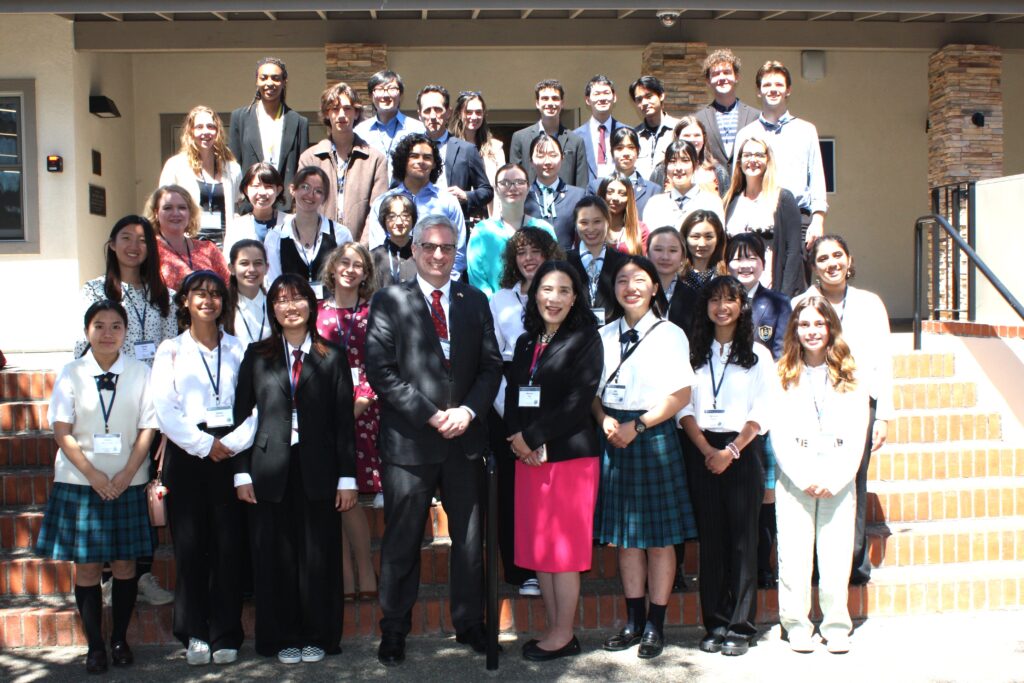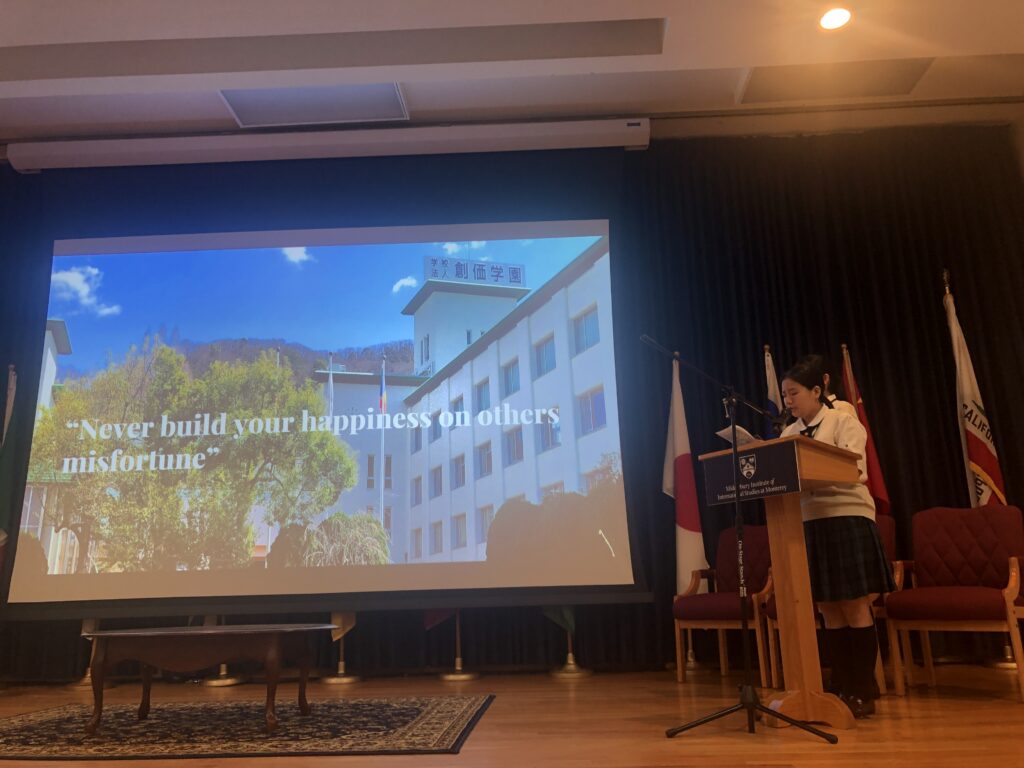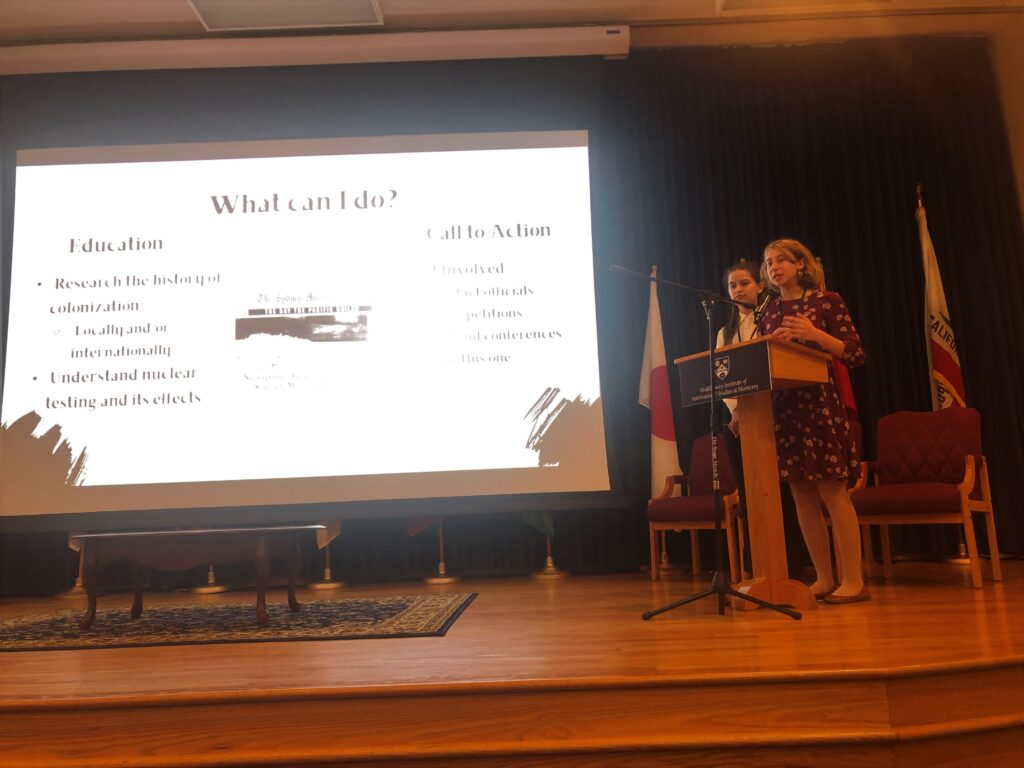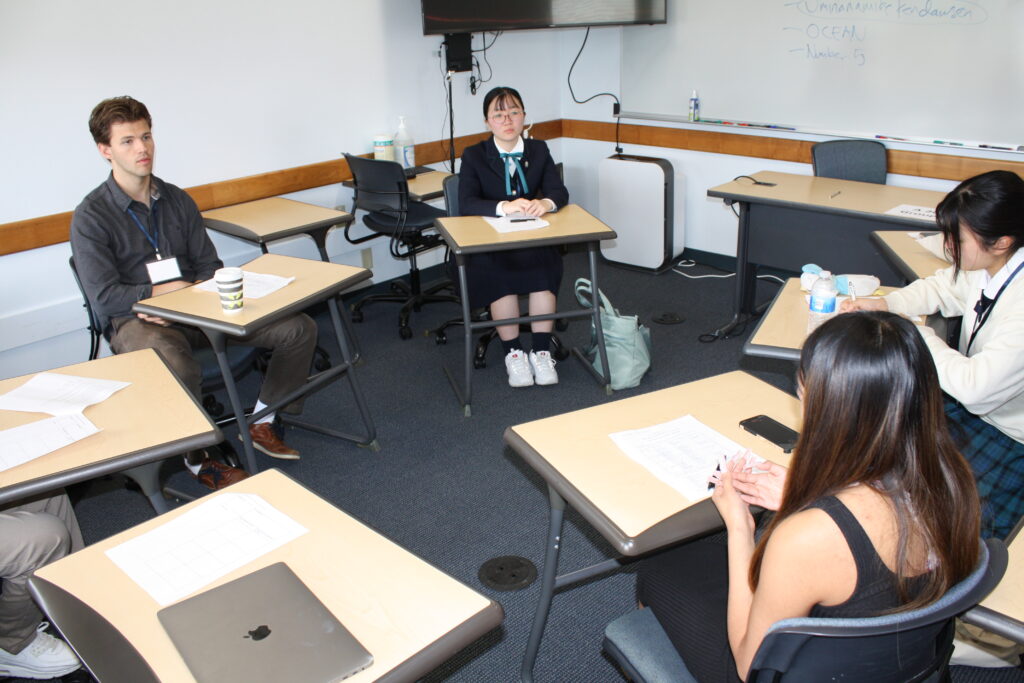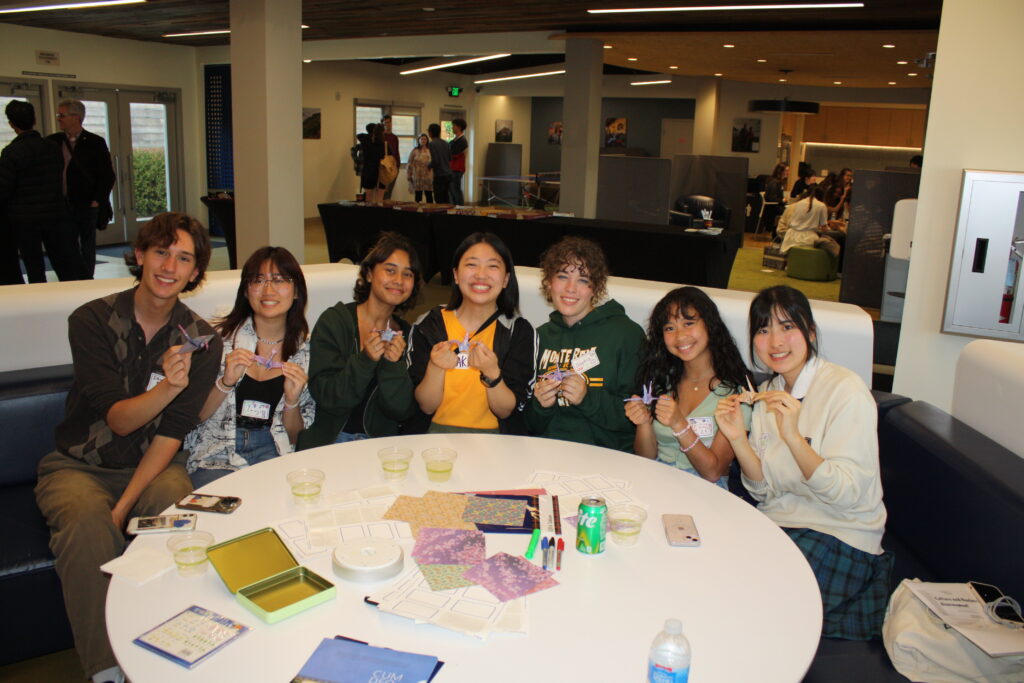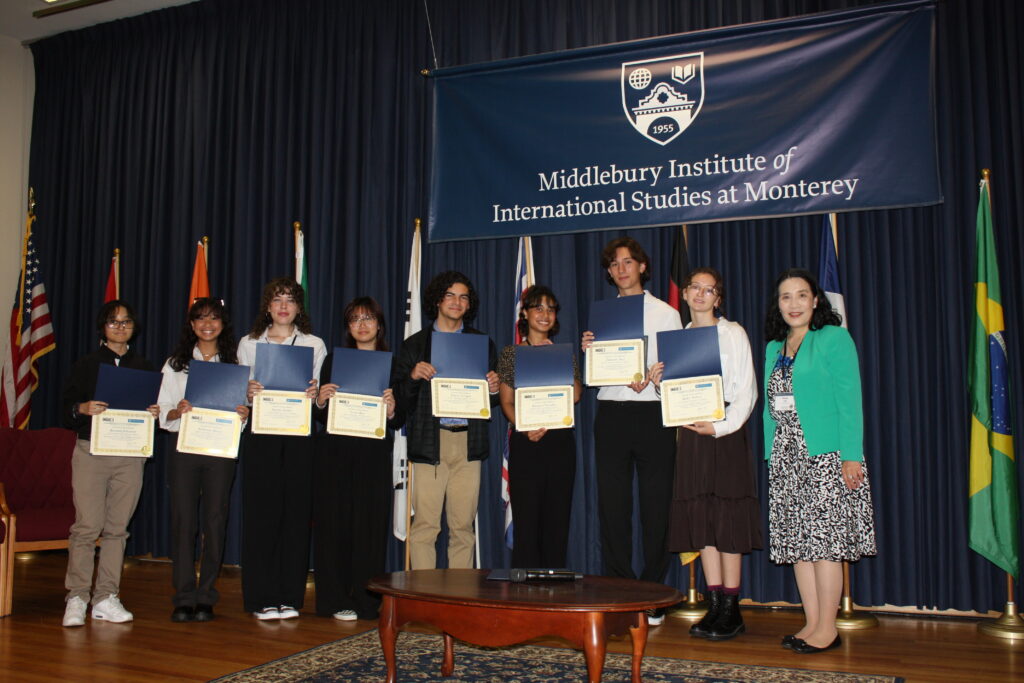August 15, 2023
Masako Toki and Halle Shephard (Graduate Research Assistant)
Student and teachers from across the United States and Japan gathered in Monterey, California for the summer Critical Issues Forum (CIF) conference (July 28th – 29th). This annual event is sponsored by the James Martin Center for Nonproliferation Studies (CNS) at the Middlebury Institute of International Studies at Monterey (MIIS) as part of the center’s commitment to nuclear nonproliferation and disarmament education. The CIF project, in particular, focuses on engaging high school students, who will become the leaders of tomorrow, on peace and security for a world free of nuclear weapons.
After three-years’ virtual activities, students and teachers from Japan and the United States for the first time met in-person since the beginning of the COVID-19 pandemic. The lively in-person discussions among the participants were the contributing factor to the success of the conference.
This year’s topic was Bringing Intersectional Approaches to Youth Education for Nuclear Disarmament and Nonproliferation. This topic challenged students to think critically and figure out how to find intersections between nuclear threats and other global challenges, such as climate change, and other social justice issues including racial discrimination. The topic also gave the students freedom to combine another concept with nuclear disarmament and nonproliferation. These students were prepared for this topic by the previous CIF conference in spring. The summer in-person conference was built upon the successful spring online conference. The students had created these projects and presentations earlier this year and now this was their chance to present their findings to a live audience.
Not only did students have the chance to share their presentations, but also to collaborate in small groups to create short-term and long-term action plans to achieve a world free of nuclear weapons.
Opening of the Conference
The CIF conference officially opened on July 28th with opening remarks by MC’s from Monterey High School, Dawson Brej and Kaelyn ‘KK’ Chandra. This year, the CIF team engaged Monterey High School students’ CIF club members as a welcoming committee of the conference. The MC’s introduced each participating school. Three schools from Japan and five schools from the United States participated in the conference at the Middlebury Institute.
After the opening remarks by CIF Senior Project Manager Masako Toki, Vice President for Academic Affairs and Dean of the Middlebury Institute, Dr. Jeff Dayton-Johnson, gave his welcoming remarks commending these high school students who diligently studied nuclear disarmament. He also highlighted the mission of MIIS that aligns to the CIF project goals. The CIF conference was so fortunate to have an excellent keynote speaker, Charles Mahaffey, who delivered a powerful, convincing, and motivational speech. Charles Mahaffey is the Deputy Assistant Secretary (Acting) for Nonproliferation Policy in the Bureau of International Security and Nonproliferation at the United States Department of State. He is also a MIIS alumnus. He shared the story of World War II through two differing perspectives of the two sides of his family. An American fought against the Axis powers flying over Japan and a Japanese citizen on the ground.
His message with a personal account permeates the audience from the two different cultures, bringing the two sides closer to finding common ground with a shared humanity. He also emphasized the importance of young people studying nuclear nonproliferation and disarmament, especially at a high school level.
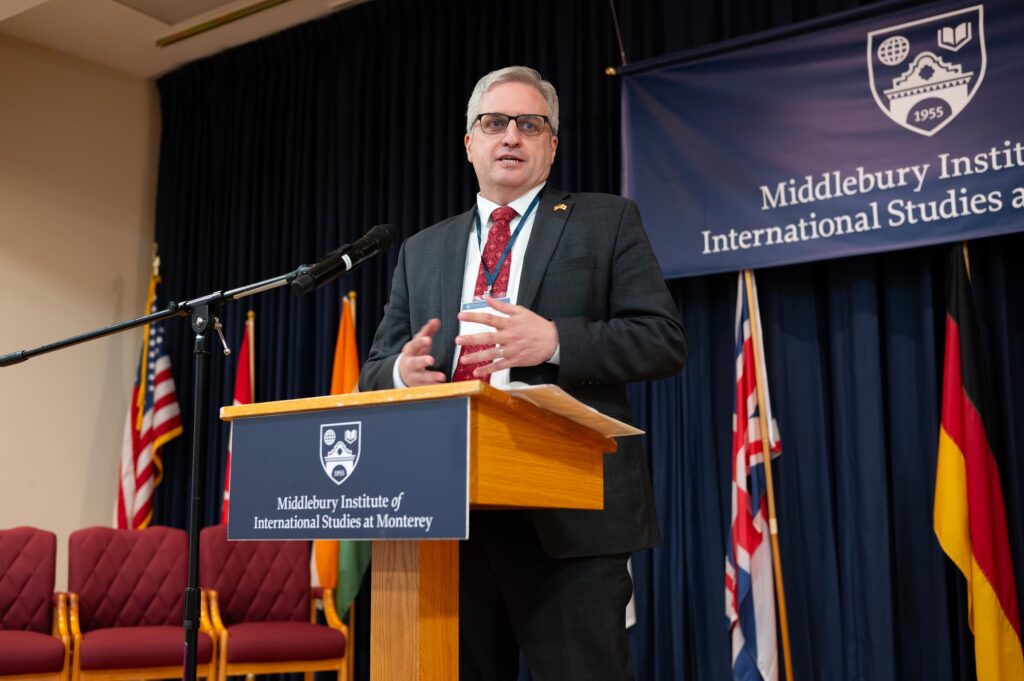
Mr. Charles Mahaffey Deputy Assistant Secretary (Acting) for Nonproliferation Policy in the Bureau of International Security and Nonproliferation at the United States Department of State
Responding to students’ questions during the question-and-answer session, Mr. Mahaffey encouraged students to pursue peace, despite the fact that the world we live in is very bleak currently. Participating in international conferences, such as these, and keeping the stories of the Hibakusha (atomic bombing survivors) alive by sharing them, are some of the essential actions that students can take. He emphasized the importance of learning from Hibakusha as the current high school students would be the last generation who can listen to Hibakusha directly.
Student Presentation Highlights
Monterey High School started off the student presentations with their project titled Peace is Our Number One Priority. Their presentation showed their two-part project with two methods of promoting peace and disarmament. The first part is making nonproliferation and disarmament studies a part of the curriculum at their school. The second part is the creative approach of making a mural that will be displayed for the whole school to see. They picked art as a medium because of the universality of art. Their mural could be understood by everyone, including those who speak different languages or high schoolers who are not nonproliferation experts.
Soka Senior High School from Tokyo followed with their presentation titled Nuclear Issues Education for Japanese Junior High School. Their project was about making nuclear disarmament topics accessible to everyone. Their method of learning was a card game. The students found that games were an effective method of learning and raising awareness of nuclear weapons problems at their school.
Rock University High School, from Janesville, Wisconsin, in their presentation with a title of Going Beyond the Bomb, discussed humanitarian impacts of nuclear testing, especially the discrimination that native Americans faced as victims of nuclear testing. They also introduced the podcast they created with other classmates with an aim to engage more young people in nuclear disarmament and social justice activities.
Kansai Soka Senior High School from Osaka focused on the intersection between culture and nuclear disarmament for their research project. They presented how film influences the public discourse on the effects of nuclear weapons. The students spoke about famous films depicting the horrors of nuclear weapons and how these films have lost relevance in today’s culture. They hope that in the future films can be accessed online for free in order to effectively be utilized to educate the current generation.
First time participant, Julia R. Masterman Laboratory and Demonstration School from Philadelphia presented their research project on history of France’s nuclear testing in French Polynesia and Algeria. As indicated by their presentation title, When People Become Playthings, the Masterman students depicted the inhumane nature of nuclear testing, highlighting France’s disregard for the health and safety of their colonized populations. France has a history of downplaying the damage that their nuclear test has had on their colonized populations and a history of denying any sort of reparations for victims of nuclear testing. The students found that this was an under-researched area of study.
The next presentation was A World Without Nuclear Weapons by Hiroshima Jogakuin Senior High School. These students presented on the devastation that nuclear weapons caused to their hometown Hiroshima, and their own school, which is located in the center of the city. They went on to describe the allocation of government funds to the military and how decreasing military spending would then lead to world peace and increased funding for beneficial government funded services.
Westridge School, another new school to the CIF project, presented their studies on Nuclear Weapons and the Promethean Gap. They opened their presentation by explaining how their project connected to the recently released film, Oppenheimer. They explained how Oppenheimer was thought to be like Prometheus from the Greek myth, which they went on to describe. The Promethean Gap describes the phenomenon of humans creating something of which they cannot understand its power. Their presentation further included the story of a Hibakusha they interviewed who had been directly impacted by the atomic bombing. They emphasized the importance of learning from Hibakusha to get a full grasp of the terrible power of nuclear weapons and close the Promethean Gap.
Between the presentations there were three panel discussions moderated by the CNS Summer Undergraduate Fellows. These panel discussions were a great way for students to find the similarities among all of their projects. The students were asked about their CIF experiences and what they gained from them. The students also shared the challenges that they encountered during their research, and how they overcame them. Students also explained what inspired them to become interested in disarmament and nonproliferation studies.
Students’ final projects can be viewed on the CIF website.
Day 2
The second day started with another keynote speech by Dr. Netta Avineri, who is a professor of TESOL/TFL at MIIS and serves as the Institute’s Intercultural Competence Committee Chair. Her speech, titled Intercultural Communication for Social Change and Nuclear Disarmament, laid the foundation for the small group discussions.
Dr. Netta Avineri’s speech was about how our identities influence our perspectives. In order to have effective intercultural communication we need to be aware of this influence. She broke down in detail the different aspects that form our identities and discussed how different parts of society form our cultural identity. Finally, she showed the students how they can apply these ideas to their critical thinking skills.
Small Group Discussions
After the plenary session of the second day, the students broke up into groups of about six students and went off to their own rooms on campus. The groups, led by two CNS Summer Undergraduate Fellows, created a group name, and developed short-term and long-term action plans for nuclear disarmament. The CNS Undergraduate Fellows led the high school students and fostered their innovative ideas. These Undergraduate Fellows have remarkable prior experience with collaborative group work, and mentoring, as well as leadership. After rich discussions in small groups, high school students had a chance to share their action plans for nuclear disarmament. While there were various ideas presented by students, the underpinning objective of each action plan was how to raise more awareness of nuclear dangers, the importance of nuclear disarmament, and how to educate younger generations on nuclear weapons related issues.
Their creative ideas for short-term actions that student can take included auctioning off nuclear disarmament art to raise money so more students can participate in this kind of disarmament conferences and utilizing social media more effectively to promote the CIF project. As for mid to long term action plans, some students indicated that studying nonproliferation issues at college and graduate schools to grow their own personal expertise, making international pen pals to cultivate friendship across the globe to foster world peace, and generating media attention on nuclear disarmament through social media campaigns. Some groups also introduced their ideas to promote the Treaty on the Prohibition of Nuclear Weapons (TPNW) to local governments by sending emails and letters to their representatives.
Cross-Cultural Activities
During the conference, the students had plenty of opportunities for cross-cultural experiences. Before the first official day of the conference, our Japanese students from Tokyo, Osaka and Hiroshima were given a tour of Monterey High School. The students bonded further during a lively game of Jeopardy, which quizzed them on geography, politics, nuclear disarmament, international disarmament treaties, pop culture and more. Moreover, Japanese students taught American students how to fold paper cranes, the symbol of peace. During their final day the students all had an opportunity to visit the Monterey Bay Aquarium, which gave them the full Monterey experience. The Japanese students stayed with host families in Monterey to get fully immersed in American culture.
Conclusion
CIF has always been committed to promoting nonproliferation and disarmament through youth education, cross-cultural understanding, and cooperation. The students were given the opportunity to think creatively about a field that is not commonly taught in schools. They also were able to bond with students with similar interests from different schools and countries. Since the number of high school students who are interested in nuclear disarmament is still miniscule, these students who participated in the CIF conference were energized by being surrounded with those who have common purposes, and interest. And such experience further motivated these students to promote nuclear disarmament in their own community to have ripple effects.
This conference was very timely given the heightened tensions in the world today. This conference also demonstrated that young people, such as these high school students, have tremendously important roles to play to make progress toward a world free of nuclear weapons. Moreover, cross-cultural activities have countless benefits for fostering international coalitions. The friendships they have cultivated during the conference continue to inspire them to broaden their perspectives of the world. Not only did students have life changing experiences because the conference was their very first trip to California or the United States, but the students are also taking with them leadership skills that they can use in their future in the field of disarmament and nonproliferation. As the students all developed action plans to work towards a nuclear weapons free world, it is our hope that the students are empowered to go on to carry out their action plans. There are many obstacles to nuclear disarmament and nonproliferation, but these young people are surely creating hope through their creativity, enthusiasm and global mindedness which are all essential elements for nuclear disarmament.
This year’s CIF project was made possible by generous funding from the Kathyrn Wasserman Davis Collaborative in Conflict Transformation Grant, the Tom and Sarah Pattison Fund, the SAGA Foundation, Mr. Gregg Wolpert and other private donors.
List of participating schools:
United States
Monterey High School
Julia R. Masterman Laboratory and Demonstration School
Rock University High School
Westridge School
Carmel High School (Observer)
Japan
Hiroshima Jogakuin Senior High School
Kansai Soka Senior High School
Soka Senior High School
View conference booklet for more details.
See the Monterey County Weekly article on the CIF conference.

